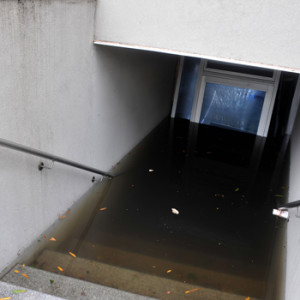How to Prevent Water Damage in Your Home
An important step to prevent water damage is understanding what water damage is, what causes it and what the consequences are of not addressing a potential issue. Water damage can strike anywhere, regardless of whether it comes in the form of humidity, rain or snow. When an excess of moisture is introduced to the home environment, it can cause damage that will lead to costly repairs and other inconveniences. Too much moisture attracts termites and other wood-boring insects. It also provides an ideal environment for mold and mildew growth. Even outside the home, water can be damaging. Flooded basements result in property damage and too much flooding around the foundation of a home can weaken it. So from weakened frame to weakened foundation, water damage eats away at the very core of your house. Whether it be rain, condensation or high humidity, when moisture accumulates, you must protect your property at all costs.
Moisture Prevention Basics
The first step in the process of effective water damage prevention is ensuring your home doesn’t have any issues at present. Common areas where water intrusion occurs are windows and doors, your roof, basement and plumbing. It is of the utmost importance that these all be in good condition. Quality windows and doors are a must for keeping the elements out; this is especially true for your roofing as well. Your basement may be prone to flooding so it is necessary you take every precaution possible to have a weatherproof seal and effectively manage the flooding when it occurs. Even if you don’t have a basement, ensure your crawlspace is dry regularly. Finally, make sure you don’t suffer from any leaks in your plumbing. Moving forward your water damage prevention efforts will be built upon a stable foundation so long as your home currently is in good condition.
Tools & Add-Ons
Once you have determined you have no issues that must be addressed, the next step is add-on items that can greatly assist in your efforts. Flashing, around your doors and windows, is a metal strip that is designed to stop water from intruding. Dehumidifiers are great tools as they help regulate the humidity levels in your home. A strategically placed dehumidifier could help keep your home mold and mildew free even in the most humid climates. Rain gutters are essential for rainy climates, as they route rain water away from the home through a water spout. Once you have a rain gutter installed, make sure you keep it clean and free of debris for maximum results. Plastic covering for the ground in your crawlspace can keep moisture from escaping the soil and accumulating in your home. Landscaping can also contribute to your moisture prevention efforts. Sloping your yard away from your home keeps water from accumulating around your foundation. Well positioned shrubs can create a barrier for excess water as well. Another important piece of equipment is a sump pump. This device is mandatory in some parts of the country where all basements flood. The sump pump will keep excess water from rising too high in your basement so it is important that you maintain it well.
The Cost of Water Damage Prevention
In the end, with quality windows, doors and roofing as well as the proper prevention equipment in place, you can avoid the hassle and expense of water damage. If you don’t have quality materials composing the essential components of your home, the cost of upgrading them will be much lower than the future expenditure on water damaged property. Couple these components with proactive maintenance, such as regular leak inspections and sump pump checks, roof inspections and vent cleaning and you will maintain a dry and damage free home. By keeping your home well ventilated, at an even temperature and leak free, water will find it difficult to accumulate there.
Whether you live in extraordinarily hot or cold temperatures, water, in its many forms, can find a way into your home if you aren’t vigilant. That water aims to destroy the wooden structures of your home, weaken your foundation and otherwise wreak havoc on your property. So take the time to make sure all of your water damage prevention components are in place. Also, when leaving town you will want to take precautions to ensure those components are working for you in your absence. In the end, a proactive approach toward water damage will save you a lot of money in the long run.






